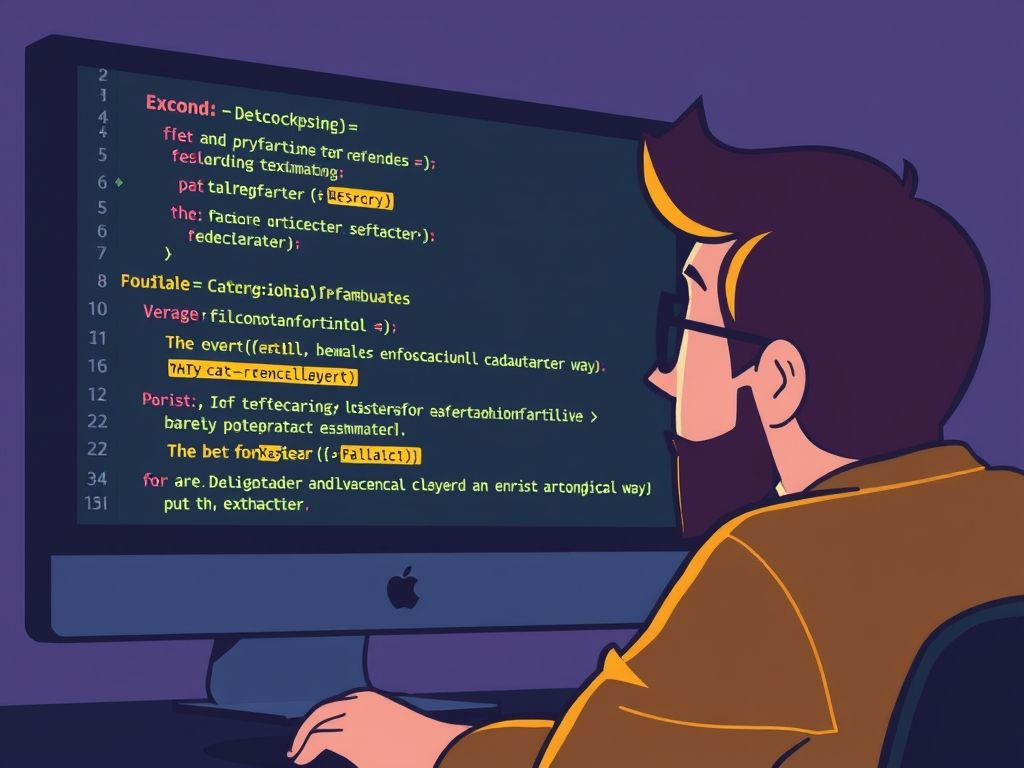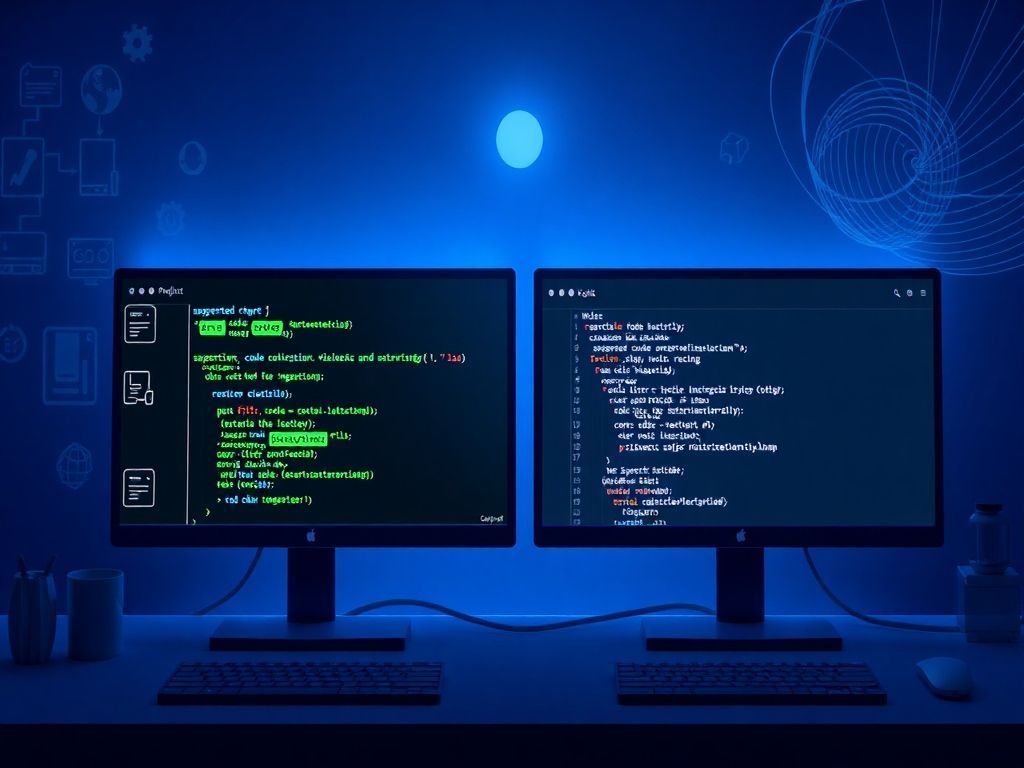Debugging is a crucial skill for any programmer. Efficiently identifying and resolving errors is essential for successful software development. This guide provides a comprehensive approach to debugging, covering fundamental concepts and practical strategies for finding and fixing errors.
Understanding Debugging Fundamentals
Debugging is an indispensable part of the software development lifecycle. Without proper debugging skills, even the most experienced programmers can find themselves lost in a maze of errors. The ability to effectively debug code is not just about fixing problems; it’s about understanding the underlying system, improving code quality, and preventing future issues. In this chapter, we’ll delve into the importance of debugging, explore common error types, and outline the debugging process. Understanding these fundamentals is crucial for mastering the art of debugging.
The importance of debugging in software development cannot be overstated. Software is inherently complex, and errors, often referred to as “bugs,” are inevitable. These bugs can range from minor inconveniences to critical failures that can compromise entire systems. Debugging is the process of identifying and removing these errors, ensuring that the software functions as intended. Effective debugging saves time, reduces costs, and improves the overall reliability and performance of the software. It also enhances the developer’s understanding of the codebase, leading to better coding practices and fewer errors in the future. The process of *tìm lỗi hiệu quả* (finding errors effectively) is a continuous learning experience.
Common error types in software development can be broadly categorized into syntax errors, logical errors, and runtime errors. Syntax errors are the easiest to detect because they are typically caught by the compiler or interpreter. These errors involve violations of the programming language’s rules, such as missing semicolons, incorrect variable declarations, or mismatched parentheses. Logical errors, on the other hand, are more subtle. They occur when the code runs without crashing but produces incorrect results due to flaws in the program’s logic. For example, using the wrong operator in a calculation or implementing an incorrect algorithm can lead to logical errors. Runtime errors occur during the execution of the program and are often caused by unexpected conditions, such as dividing by zero, accessing an invalid memory location, or attempting to open a file that does not exist. Understanding these different types of errors is the first step in the *Hướng dẫn lập trình* (programming guide) process.
The debugging process typically involves several key steps: identification, localization, analysis, and resolution. The first step, identification, involves recognizing that a bug exists. This might be reported by a user, discovered during testing, or noticed by the developer during code review. Once a bug is identified, the next step is localization, which involves pinpointing the exact location in the code where the error is occurring. This can be achieved through various techniques, such as using debugging tools, inserting print statements, or carefully reviewing the code. After the error has been located, the next step is analysis, which involves understanding why the error is occurring. This might require examining the program’s state, tracing the flow of execution, and considering the interactions between different parts of the code. Finally, the resolution step involves fixing the error and verifying that the fix has resolved the issue without introducing new problems.
There are several different approaches to debugging, each with its own strengths and weaknesses. Step-by-step analysis involves manually stepping through the code, line by line, to observe the program’s state at each point. This approach can be time-consuming but is often effective for understanding complex logic and identifying subtle errors. Using debugging tools, such as IDE debuggers, allows developers to set breakpoints, inspect variables, and trace the execution of the program in a more efficient manner. These tools provide valuable insights into the program’s behavior and can significantly speed up the debugging process. Employing logical reasoning involves using deduction and critical thinking to identify the root cause of the error. This approach requires a deep understanding of the code and the underlying system and can be particularly effective for debugging logical errors. *Debugging* is a skill that improves with practice and experience.
Effective Debugging Strategies will be discussed in the next chapter.
Chapter 2: Effective Debugging Strategies
Building upon our understanding of debugging fundamentals, this chapter delves into effective debugging strategies that can significantly streamline the process of *tìm lỗi hiệu quả* (finding errors effectively). As we discussed previously, understanding the nature of errors and the general debugging process is crucial. Now, we’ll explore specific techniques to isolate, identify, and resolve those pesky bugs.
One of the most fundamental strategies is **isolating the source of errors**. This involves systematically narrowing down the potential locations where the error might be occurring. Start by examining the areas of code that have recently been modified or that interact with the part of the program exhibiting the error. Use a divide-and-conquer approach: comment out sections of code to see if the error disappears. If it does, the error lies within the commented-out section. This process helps pinpoint the exact line or block of code causing the problem. This relates directly to *Hướng dẫn lập trình* (Programming Guide), as proper code structure aids in easier isolation.
Another essential technique is **using print statements for intermediate value checks**. This seemingly simple approach is incredibly powerful. By strategically placing print statements throughout your code, you can observe the values of variables at different points in the execution. This allows you to track the flow of data and identify where unexpected values are introduced. For example, if you’re performing a calculation, print the values of the operands and the result at each step. This makes it easy to spot where the calculation goes awry. Remember to remove or comment out these print statements once the bug is resolved, as they can clutter the output and impact performance.
**Employing logging mechanisms for tracking program execution** is a more sophisticated approach than simple print statements. Logging frameworks provide a structured way to record information about the program’s execution, including timestamps, severity levels (e.g., debug, info, warning, error), and the source of the log message. This allows you to analyze the program’s behavior over time and identify patterns or correlations that might be causing the error. Logging is particularly useful for debugging complex systems or applications where the error is intermittent or difficult to reproduce.
Effective use of **debugging tools** is paramount. IDE debuggers offer a wealth of features that can significantly accelerate the debugging process. These tools allow you to:
- Set breakpoints: Pause the execution of the program at specific lines of code.
- Step through code: Execute the program one line at a time, observing the values of variables and the flow of execution.
- Inspect variables: Examine the values of variables at any point during execution.
- Evaluate expressions: Evaluate arbitrary expressions in the context of the current execution point.
- Call stack analysis: Trace the sequence of function calls that led to the current execution point.
Mastering these features is crucial for efficient debugging.
Let’s consider some practical examples of debugging common errors.
*Syntax Errors*: These are usually the easiest to fix. The compiler or interpreter will typically provide an error message indicating the location and type of syntax error. Pay close attention to the error message and carefully examine the surrounding code for typos, missing semicolons, or mismatched parentheses.
*Logical Errors*: These are more challenging to debug because the program runs without crashing, but it produces incorrect results. This is where print statements, logging, and IDE debuggers become invaluable. By carefully tracing the flow of execution and examining the values of variables, you can identify the point where the program’s logic deviates from the intended behavior.
*Runtime Errors*: These errors occur during program execution, often due to unexpected input or environmental conditions. Examples include division by zero, null pointer exceptions, and array index out of bounds errors. Debugging runtime errors often involves using try-catch blocks to handle exceptions gracefully and prevent the program from crashing. Logging can also be helpful in capturing information about the state of the program when the error occurred. This process is vital for *Debugging* code effectively.
In summary, effective debugging requires a combination of strategic thinking, careful observation, and the skillful use of debugging tools. By mastering these techniques, you can significantly reduce the time and effort required to *tìm lỗi hiệu quả* and improve the overall quality of your code.
This foundation sets the stage for our next chapter, “Advanced Debugging Techniques,” where we will explore more sophisticated tools and strategies for tackling complex debugging challenges.
Here’s the chapter content:
Chapter: Advanced Debugging Techniques
Building upon the “Effective Debugging Strategies” discussed previously, where we explored isolating errors, using print statements, and leveraging logging frameworks, this chapter delves into more advanced debugging techniques. These techniques are crucial for identifying and resolving complex issues, especially those related to performance and memory management. Understanding and applying these methods will significantly improve your ability in *tìm lỗi hiệu quả* (effectively finding errors).
One of the most powerful advanced techniques is using profiling tools. Profilers analyze your code’s execution to identify performance bottlenecks. They provide insights into which functions consume the most time and resources. This information is invaluable when optimizing code for speed and efficiency. For example, a profiler might reveal that a seemingly innocuous function is being called repeatedly within a loop, causing a significant slowdown. Armed with this knowledge, you can then focus your optimization efforts on that specific area. Various profiling tools are available, depending on your programming language and environment. Some popular options include gprof for C/C++, the built-in profiler in Python (cProfile), and specialized profilers within IDEs like Visual Studio and IntelliJ IDEA. The key to effective profiling is to run your code with realistic workloads and analyze the results carefully. Understanding how your program spends its time is fundamental to *debugging* performance problems.
Another critical area in advanced debugging is managing memory. Memory debuggers are essential for tracking down memory leaks and other memory-related errors. A memory leak occurs when a program allocates memory but fails to release it when it’s no longer needed. Over time, these leaks can accumulate, leading to performance degradation and eventually program crashes. Tools like Valgrind (for C/C++) and address sanitizers (ASan) can detect memory leaks and other memory errors, such as buffer overflows and use-after-free errors. These tools work by monitoring memory allocations and deallocations, and flagging any inconsistencies or errors. Using a memory debugger is a vital part of *hướng dẫn lập trình* (programming guidance), ensuring the stability and reliability of your applications. Regularly using these tools during development can prevent many memory-related issues from reaching production.
Static analysis tools provide a different approach to debugging. Instead of running the code, these tools analyze the source code itself to identify potential errors and vulnerabilities. Static analysis can detect a wide range of issues, including syntax errors, coding style violations, potential null pointer dereferences, and security vulnerabilities. Tools like SonarQube, Coverity, and Pylint (for Python) can be integrated into your development workflow to automatically analyze your code and provide feedback. The advantage of static analysis is that it can catch errors early in the development cycle, before they even make it into the runtime environment. This can save significant time and effort in the long run. Furthermore, static analysis can help enforce coding standards and best practices, leading to more maintainable and robust code. By incorporating static analysis into your *debugging* process, you can proactively identify and address potential issues, improving the overall quality of your software.
In conclusion, mastering advanced debugging techniques like profiling, memory debugging, and static analysis is crucial for developing efficient and reliable software. Each technique offers unique insights into your code’s behavior, allowing you to identify and resolve complex issues that might otherwise be difficult to detect. By incorporating these techniques into your *hướng dẫn lập trình* (programming guidance) and workflow, you can significantly improve your ability to *tìm lỗi hiệu quả* (effectively finding errors) and build higher-quality applications.
Conclusions
Mastering debugging is a continuous learning process. By understanding the fundamentals, employing effective strategies, and utilizing advanced techniques, you can significantly improve your programming skills and develop more robust and reliable software.











